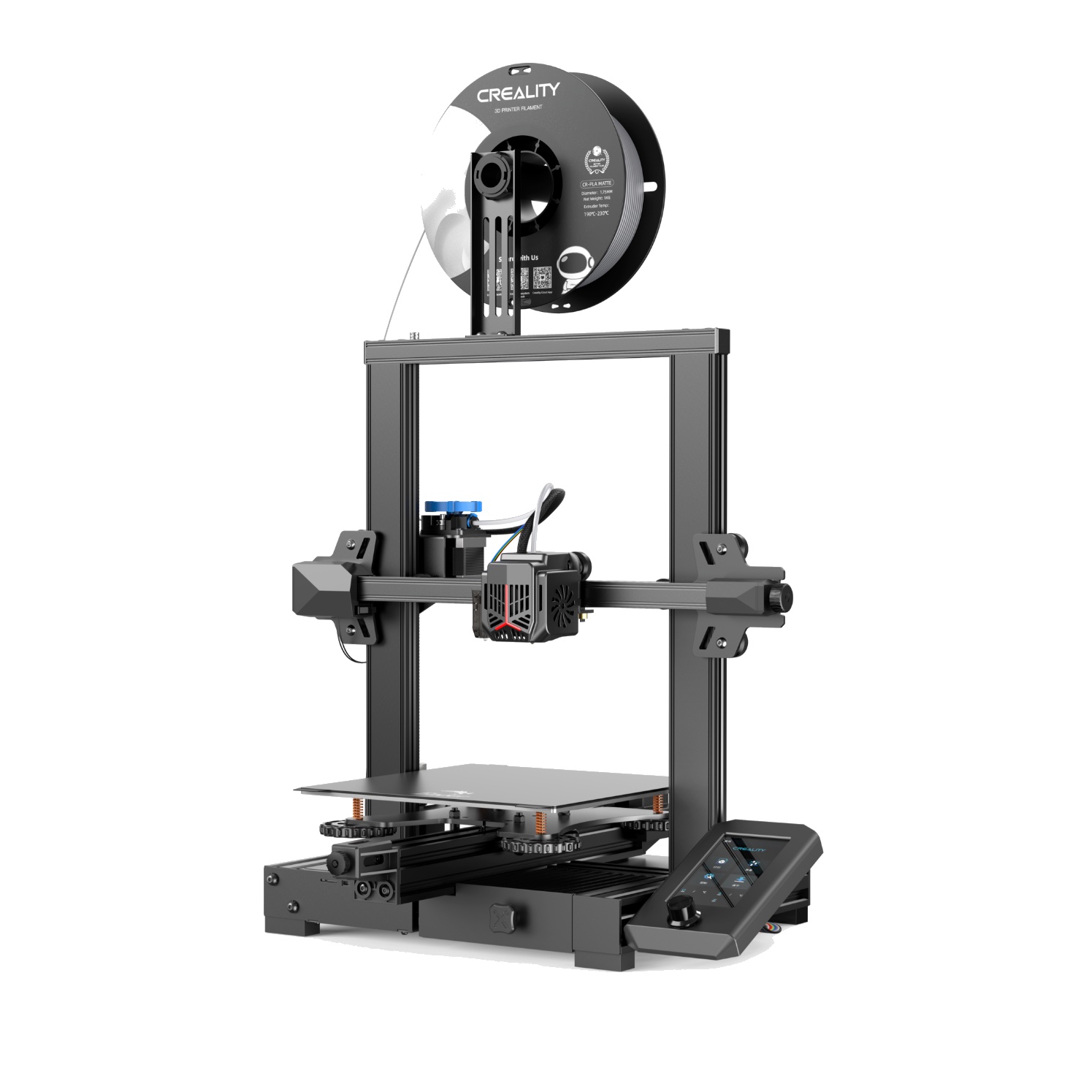Compare Photon M3 Premium vs Ender 3 V2 Neo
Comparison between the best 3D printers
Choose the best 3D printer at the best price. The cheapest 3D printers are here.
Buy a 3D printer here with 3D Fila.
 |
 |
|
| Model | Photon M3 Premium[BUY Photon M3 Premium] |
Ender 3 V2 Neo[BUY Ender 3 V2 Neo] |
| Printing Material | Resin | Filament |
| Buy Resin for Anycubic Photon M3 Premium | Buy Filament forCreality 3D Ender 3 V2 Neo | |
| Estimated price | $600,00 | $310,00 |
| Manufacturer | Anycubic | Creality 3D |
| Release Year | 2022 | 2022 |
| Print Volume [mm] | 123x219x250 | 220x220x250 |
| Printer Size [mm] | 330x350x630 | 438x424x472 |
| Weight [kg] | 19 | 9,8 |
| Power Loss Recovery | NO | YES |
| Maximum Resolution [mm] | 0,01 | 0,1 |
| Processor | 4.2.2 mainboard | |
| Display | Display touchscreen 4,3'' | Display touchscreen 4,3'' |
| Power Supply | 150 W | |
| Connectivity | USB / Wi-Fi | SD / USB |
| Operating systems | Windows, Mac, Linux | |
| Date of registration in the system | 2023-01-19 | 2022-12-09 |
| Release date | 2022 | 2022 |
| Extra features | The Anycubic Photon M3 Premium Printer features MSLA technology with a 10-inch monochrome LCD screen and 8K resolution, ensuring prints with fine details thanks to the 28.5 micron resolution. It has a generous build volume (219 x 123 x 250 mm), an intelligent cooling system for greater durability, and a laser-etched build plate for better adhesion. It offers dual air filters, reducing odors, and the promise of compatibility with the Anycubic Cloud app. Its design includes an Art Deco-style UV curved glass and an efficient leveling system for the build platform. | The Ender 3 V2 Neo printer stands out for its automatic bed leveling with the CR Touch system, ensuring high-quality initial layers. It features an all-metal Bowden extruder for increased durability and improved filament handling. Its flexible, PC-coated magnetic build plate makes it easy to remove prints and is durable and easy to clean. It also includes a new user interface with model preview and an updated gantry design. The Ender 3 V2 Neo maintains the same build volume and temperatures as the previous version, supporting popular filaments such as PLA and ABS. It features a quiet 32-bit mainboard and additional features such as a filament sensor, print recovery, simple 3-step assembly, an integrated toolbox, and belt tensioners. |
| Support for multiple colors and materials (AMS and CFS) | NO | NO |
Notes * |
||
| Cost-benefit | 7 / 10 | 6 / 10 |
| Hardware | 3 / 10 | 2.4 / 10 |
| Tela | . | . |
| Print volume | 3 / 10 | 3 / 10 |
| Performance | 9 / 10 | 0 / 10 |
| [BUY Photon M3 Premium] | [BUY Ender 3 V2 Neo] |
Conclusion |
| In comparing the Anycubic Photon M3 Premium and the Ender 3 V2 Neo, several key factors emerge to guide potential buyers in making an informed decision. The Photon M3 Premium, with its advanced MSLA technology, excels in achieving incredibly high print resolutions and fine detail, making it particularly suitable for applications requiring precision, such as miniatures or intricate designs. Its larger touch screen and additional features, like dual air filters and an intelligent cooling system, enhance the printing experience, albeit at a higher price point. On the other hand, the Ender 3 V2 Neo stands out for its value, offering a robust set of features at a lower cost. Its automatic bed leveling and durable design cater well to users who prioritize ease of use and reliability. While its resolution is not as fine as that of the Photon M3, it still holds up for general-purpose printing, especially for larger models due to its more expansive build volume. In terms of performance, the Photon M3 shines when it comes to detail, making it an excellent choice for detail-oriented projects. However, the Ender 3 V2 Neo compensates with user-friendly features and a solid print quality for a variety of common materials. Ultimately, the choice between these two printers depends on the buyer's priorities. If high-resolution prints and detailed models are the primary goals, the Photon M3 Premium is the superior option. Conversely, those seeking a more budget-friendly machine for versatile 3D printing tasks should opt for the Ender 3 V2 Neo. Both models provide excellent cost-benefit ratios for their intended uses, making them strong contenders in the 3D printing market. |

